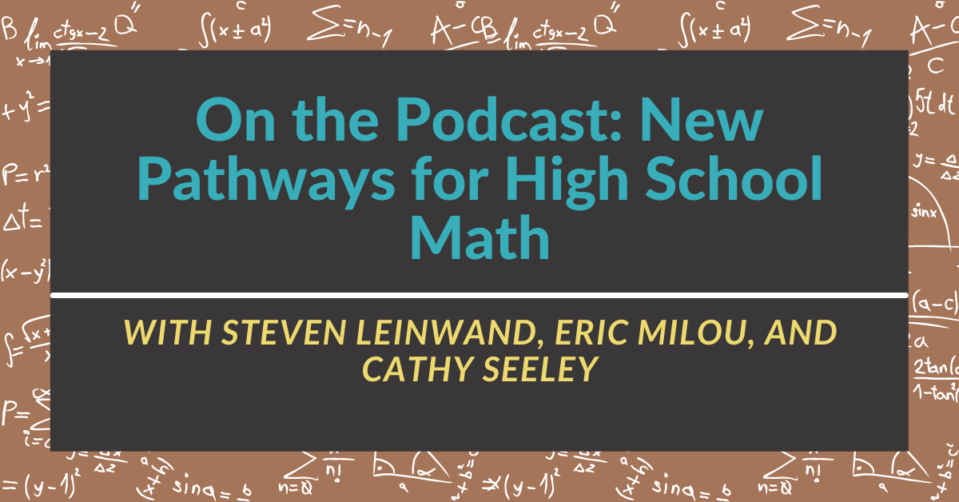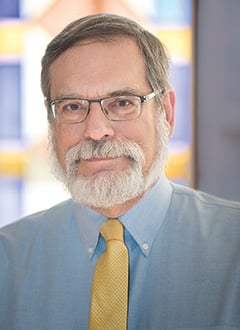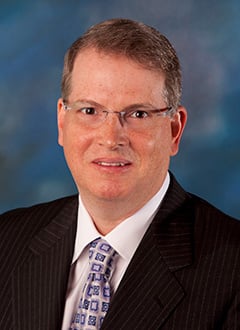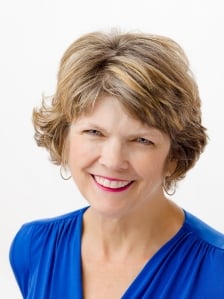
What is a math pathway? Why didn’t we learn financial literacy in high school? And does everyone need to learn calculus?
What is a math pathway? Why didn’t we learn financial literacy in high school? And does everyone need to learn calculus?
Today on the podcast we’re joined by three leaders in math education to talk about building new pathways in mathematics that are responsive to students’ needs and goals.
Steve Leinwand and Eric Milou are co-authors of the new book Invigorating High School Math: Practical Guidance for Long-Overdue Transformation, which addresses the most critical challenges facing high school mathematics. They are joined by Cathy Seeley, who has over 30 years in middle and high school math education and has served as a K–12 mathematics supervisor. From 2004 to 2006, she served a 2-year term as president of the National Council of Teachers of Mathematics.
Their conversation begins by describing what a high school math pathway is.
Below is a transcript of this episode.
Steve: So I think one of the ways to think about it is that everyone leaves fifth grade and goes into sixth grade. I mean, if there is sixth grade math and therefore it is not appropriate to talk about different pathways or different needs, everyone needs to be ready for sixth grade math. The same thing occurs in the transition from middle school to high school. We all know that everyone leaves eighth grade and moves to ninth grade. And so in a strong program, eighth grade is something that prepares students for ninth grade. And since everyone gets to ninth grade, we have a coherence there. We all know that high school leads to a whole range of jobs. It is something that leads to everything from highly competitive four-year colleges to a whole range of other post-secondary options and training and technical schools. And so the idea that everyone has a similar experience in high school is absurd and it doesn't prepare people for a world where mathematics is so desperately needed. And so this idea of pathways becomes really important.
Eric: Well, this is all... this conversation is so important and let's face it, it's all centered around one thing. It's all centered around whether or not algebra two is a requirement for all kids in today's world. And one of the rare agreements, almost all mathematical organizations, including NCTM, MAA, ATMAT, AMATYC, the association of math associations of two year colleges, have all called on change in high school math curriculum. All of them, including all of us on this call agree that all kids need algebra and geometry, hopefully in an integrated approach over the course of their ninth and tenth grade years. But what comes next is a debate we are having.
The debate is, is algebra two a required course for all kids? And we all know algebra two. It's pencil and paper methods. There are various types of equations, quadratics, exponentials, rationales, polynomials, radicals. And if historically, it's for preparation for calculus. Cathy has said very, very, very, very, very many times that algebra two is a prime example of a course with students struggling just to pass, even if they do so without understanding, and with some students dropping out of school or diverted their future paths slowly because they haven't been able to succeed in the irrelevant content of algebra two. So I pass it right to Cathy there to expand on that quote.
Cathy: Well, and the thing is that as relevant as that quote may have been, I don't know, five years ago, 10 years ago, in today's world with technology, you look at the curriculum of algebra two and the content in there, and you think, "Really that's how these students are going to make their way in the world?" I mean even students going on to calculus aren't going to be doing things the way that we're looking at them in an algebra two class. And as Steve is talking about the idea that realizing that students are going into tech programs and training programs and nursing programs and business, even in colleges, going into business fields and social sciences and the arts, and not to mention the military or whatever other kinds of options that maybe are going to two-year colleges. So this notion that this frankly archaic algebra two course... I would argue it's not that good for anybody.
And so I was excited to see in your book, you're thinking about changing or re-imagining the content of what would be in an advanced algebra course that might prepare students for going on to calculus if that's where they're headed. But looking at other options, other pathways, other ways through the high school curriculum, for those many, many students who are maybe going in other directions, even those who may be interested in some of the STEM fields, aren't going to need that kind of direction. So I think acknowledging the existence of technology, acknowledging that we are the only country in the world, essentially, that offers a course like this. There are so many reasons to be rethinking what we're doing. And I think y'all are nailing it.
Eric: Steve, the pushback often in many conversations is that algebra two is more rigorous than any other alternative math course option. How will we respond to those who say that algebra two is the most rigorous and options like statistics and quantitative reasoning are not?
Steve: So I think that's a great question. And I encourage everyone who says that to get their hands on an algebra two final examination and give that test to Google and to Alexa. What's rigorous about a test where a piece of technology provides the opportunity to pass that test, knowing no mathematics except being able to read or enter those problems? I mean, what does synthetic division and trig identities and polynomial arithmetic, just to name a few things, have to do with preparing people for an understanding of different kinds of functions, a sense of which model makes the most sense and ability to use technology to support the opportunity to solve problems, and that's all missing in algebra two. There's so much that's in algebra two that people justify as needed for calculus and yet that isn't even true when so much of the calculus becomes just critical understandings about rates of change and area under curves that are really the essence of that course.
So I think what's important here is an understanding that we have, thanks to the common core, sort of universal understanding that less is more internationally benchmark, more focused, and this idea of trajectories at K-8. We understand that for the first time in many of our professional careers, there are real and substantive changes at the freshmen and sophomore levels at colleges and universities all across the country. That some of the largest colleges in universities recognize that the traditional run to calculus is not serving many, many disciplines because there is no statistics. There is no data and kids are not prepared for those kinds of things. And so what we're really saying is high school increasingly is the outlier. High school teachers have been provided with minimal guidance. The common core at nine 12 certainly didn't provide much guidance.
We have not been able to recognize that there is such different needs beyond just the traditional approach. Now, no one is saying, throw any of that out. I mean, we're saying that there will always be a calculus pathway, but there's got to be alternatives for the majority of students. Many studies suggest that calculus is needed for about 20% of the college students. But what about the other 80%? And look at this pandemic and look at the way it has revealed such unbelievable statistical ignorance on the part of the American people. It's unacceptable. And so we think that this idea of pathways is certainly one of the many changes that need to be considered in order to ratchet up the quality of math for everyone.
Cathy: Well, what I was going to say is that this notion of rigor that you mentioned, Eric is exactly what we need to be looking at. It's not that, oh, calculus is so hard and therefore it's the most rigorous and therefore we should be making everybody do it. But it's looking at the depth of thinking that we want students to be having. It's looking at the complexity. It's looking at their... at the reasoning and the thinking that we want students to be doing. And there are so many better ways for most students to be able to experience rigorous content and productively struggle through that content and actually learn some deep thinking. If we look at some of the things that Steve is talking about, the statistics, and I'm going to argue, I'm a huge fan of financial literacy in a very deep and complex way.
I mean, we look at the... so many of the issues facing the families and individuals and economies today in the world, deal with understanding interest and deep understanding of credit and debt and what it means to be kicking the can down the road in terms of financial commitments and so on. So rigor doesn't mean make it harder. And oh, since calculus must be the hardest course, let's aim them all there... Rigor means help people learn how to think deeply about complex things and use mathematical reasoning and mathematical habits of mind and content that involves statistics and finance and exponential growth and what it means for a pandemic to spread and all those kinds of things that we don't get in a typical progression, even if some of those things might be nice projects on the side or something like that. Let's shift the focus so that students are getting what they need, not just for everyday life, but for those different kinds of careers.
Steve: Yeah. One of the questions that I ask is how can you consider anything other than malpractice that most students graduate from high school and do not understand why paying the minimum amount on their credit card every month is putting them further and further and further behind? That to me is rigorous when we play that out. And when we use technology and when we talk about our fundamental understandings of interest and of exponential growth with interest. It just... it's a no brainer.
Eric: So there are now alternatives out there rather than focusing on the develop of algebraic manipulations and preparation for calculus. There are alternatives out there for pathways for students in grade 11 and 12, that we all agree can be equally rigorous, but with different goals and different purposes. Such alternatives stem from possibilities or quantitative reasoning courses, statistical pathways, or data science pathways. All these alternatives and there are examples of available out there on quantitative literacy statistics and data science, or some combination of them. And in contrast of the calculus pathway.
Cathy: One of the things that I really like about your approach to invigorating high school mathematics is you've talked about the coherence or the movement toward more coherence in grades K-8. The way I see your suggestion of how pathways might go with an integrated common content for grades nine and 10, or for first and second year of high school math... it looks like we can now conceptualize this K-10 continuum, which is frankly much more similar to what we see in other countries and much more flexible in terms of preparing students with some of the algebra and some of the geometry, which frankly, they've been getting some of all the way through K-8 as well.
So what we're looking at along the way is this wonderful coherent K-0 curriculum. And now in grades 11 and 12, the pathways diverts a bit, and now you have some options. So I really liked this notion of looking at that grade 11 and grade 10, the last couple of years, or as things are accelerated, I guess they might have three years in there... how you can now specialize in some different areas based on interests or whatever. And one thing I wanted to mention about it too, is that I think we all might agree that there's a whole lot of very small high schools out there who are not going to be able to offer all kinds of pathways. Supporting the notion of pathways doesn't necessarily mean you have to offer all the different pathways you can come up with. But what we need is some alternative to the calculus pathway and having an alternative, at least one alternative, and ideally more than that, think that's what we're really looking at.
Steve: Let me reiterate your point about K-10. You can't just maintain the algebra one, geometry stop, and then jump to pathways. You are not preparing kids when you have that kind of a traditional program. And so the idea of K-10 is recognizing that K-8 is currently integrated that at K-8, we are doing number and measurement and geometry and statistics and data and changing algebra altogether. We believe that ninth grade and tenth grade need to continue that.
We think that we need to reconceptualize those common years of high school without all kinds of tracks. Everyone is taking algebra, geometry, statistics in a quality integrated high school math one or math nine and math two or math 10, and then students have a sense of, okay, so where am I going with my life? Am I likely to become a health professional, a physicist? Am I somebody who believes that the sciences are my answer, I really love my chemistry.
Well, you aren't going to go to some kind of a school where you are going to need to have the kind of mathematics that is now provided to every student. You will have a sensible pathway that takes you to calculus. You will do an algebra two pre-calculus of some adjusted sort in eleventh grade. You will be able to do calculus because the idea of having two years to get kids ready for calculus seems to be less and less valuable when we've moved all kinds of algebra into eighth grade. We've moved some of the geometry into eighth grade. We have these two strong years in ninth grade in tenth grade, and then this eleventh grade course for the kids who are going to become the users of math, the scientists, the STEM majors will allow people to take rigorous calculus. Wonderful.
But we know that just as rigorous and just as appropriate it is not to worry about polynomials and functions and derivatives and exponential kinds of things, but rather to worry about the whole set of critical understandings of samples and of confidence intervals and a probability and a fairness and of how you do election kinds of things, how you are using statistical understanding to... in two years of high school when you really are ready to jump into a college level statistics course. You will already know enough to be able to thrive in a freshman economics class or in a freshmen sociology course. You will be able to handle nursing if that's what you choose to do. It just makes so much sense. And then there are some people who aren't sure they're going to go to college and they're not sure what's going on.
And that's where this idea of quantitative literacy, this data literacy and the financial literacy becomes so critical. Cathy, you've been a leader in this country for over 10 years about quantitative literacy and in schools that have used it, there have been tremendous successes, but again it's been a dumping ground for too many places or for the kids that just didn't want to move on. And I think that we have not codified it in the minds of parents and the community and guidance counselors for just how important that is. And so it is legitimate. It is rigorous whether you are doing the quantitative literacy or whether you are doing the statistical pathway or you're doing the calculus pathway. And we really are serving students on the basis of their interests and needs and not on this ridiculous notion that we have a one size fits all approach.
Eric: Many of these materials exist today out on the web. Some examples are from Cathy's data Center, the quantitative reasoning course, the National Science Foundation in collaboration with UCLA and the Los Angeles Unified School District has an intro to data science course on the web that's also freely available. And of course, Jo Boaler at Stanford has written the YouCubed data science curriculum. All of these are freely available alternative pathways for kids, but it does now raise the question is how are pathways different from tracking and how can we not... how do we not make that same mistake with tracking?
Cathy: I want to come back to the point that that y'all are making in many different ways. And that is the pathways aren't about lowering our expectations. Pathways are about shifting our focus and getting good mathematics. And I think what you're raising is the importance of working with parents and the community and our teachers and students to help them understand that these courses have expectations. I really liked the idea of making sure that we do a community outreach effort, as well as helping teachers shift their focus and looking at these good materials and good programs.
So I think the more and more we can do that and work with the colleges and universities to recognize the rigor in these courses and accept it in some states where we're seeing efforts like this, for example, in Utah, where they've been doing a more integrated math program along the way, they've been working with their universities so that the universities accept and recognize, yes, these are good rigorous courses, even though they're not all algebra two and pre-calculus and so on.
Steve: So this is really a critical question. And I think we've got to really hone in on what both of you are talking about. Tracks are different levels of the same course. We all know what tracks are. There's an honors track, that's a regular track and there's an essential tracker, or some other euphemism that we use. We don't question the content, even though we adjusted. We only questioned the kid's so-called ability. That is what ends up with dead ends. First of all, with the honors track, all we're doing is separating out the brightest kids so that they are not able to inform the learning of everybody else, which is a problem. And most importantly, tracking when actually... when implemented means that the lower tracks end up getting the lowest expectations with the modified content of stuff that they don't need.
So I walk into a lower track algebra one and all I see is they're solving linear equations and simplifying and evaluating expressions. They're never using Desmos. They are never solving problems. They're never dealing with the big idea of function. That is malpractice. That is tracking at its worst. We're saying, "Wait a second, there are pathways where it's not a track when you're talking about different content." We are saying, "Choose the appropriate content for where you are and what your interests are." I think that if we were doing the financial literacy and some of the data work, and we were worrying about teaching it effectively, oh my goodness, there's more rigor to that than there is to memorizing some of the craziness for the chain rule in calculus. That's not what makes calculus rigorous, so I think that it's the quality of the questions and the ways in which we motivate students, and that's why this is certainly not tracking in any way, shape or form. This is accommodating to the amazing differences in where students are going after high school.
Cathy: And Steven, I want to sort of elaborate on one thing you said, because tracking can also exist when we do have different courses altogether. And so let's not look at fake pathways where we look at courses like, oh, here's a mathematical modeling with application. That's of course it's been around in Texas forever and ever, and it sounds really good and it might even sound like a pathway. But in fact, when we look at it, it's oh yeah, that'll be a test preparation. So just changing the names of the courses, doesn't do it enough. We have to be looking at this notion of keeping the rigor there and rigor doesn't necessarily mean impossible to pass. It ought to be something that because it's so relevant and so meaningful and taught in ways that are engaging and focusing on reasoning that students can succeed in these courses. They don't have to be able to decode the abstractions of algebra two in order to be good at math, in order to be able to succeed in mathematics to a level that will really help them regardless of the direction they're going.
Steve: So, as we wind this down, I will simply say as a closing piece, number one, the book actually doesn't just have pathway names. It doesn't just say these are the courses. The book really spells out specific content and objectives and expectations and essential understandings for each of these courses. There is an outline for an eleventh grade calculus track. Sorry, that was a mistake, a calculus pathway course. There is also a detailed outline of what this statistics might look like leading to an AP stat course. And there are resources in the book, the whole range of things that Eric talked about that are on the web and that people can pick and choose from to be able to create these courses. Eric, do you want to finish this up with the last word?
Eric: Well, the teachers understand that the traditional algebra two and pre-calculus courses may have been entirely appropriate for some students, but they are not meeting the needs of the majority of high school juniors and seniors, and we all agree on that. And the time has come, finally. The time has come to consider a system of alternative rigorous, yet relevant courses, allocated to different pathways for high school students for better math for all of our students.
 Steve Leinwand is Principal Research Analyst at American Institutes for Research in Arlington, Virginia and the author of Accessible Mathematics and Sensible Mathematics, and coauthor of Developing Numerical Fluency. Steve served as Mathematics Supervisor in the Connecticut Department of Education for 22 years and is a former president of the National Council of Supervisors of Mathematics. In 2021, he was awarded the National Council of Teachers of Mathematics' Lifetime Achievement Award.
Steve Leinwand is Principal Research Analyst at American Institutes for Research in Arlington, Virginia and the author of Accessible Mathematics and Sensible Mathematics, and coauthor of Developing Numerical Fluency. Steve served as Mathematics Supervisor in the Connecticut Department of Education for 22 years and is a former president of the National Council of Supervisors of Mathematics. In 2021, he was awarded the National Council of Teachers of Mathematics' Lifetime Achievement Award.
 Eric Milou is Professor of Mathematics at Rowan University in Glassboro, NJ and co-author of Daily Routines to Jump Start Math Class and EnVision Math A|G|A. Eric served as President of the Association of Mathematics Teachers of New Jersey and on the Board of Directors of the National Council of Supervisors of Mathematics.
Eric Milou is Professor of Mathematics at Rowan University in Glassboro, NJ and co-author of Daily Routines to Jump Start Math Class and EnVision Math A|G|A. Eric served as President of the Association of Mathematics Teachers of New Jersey and on the Board of Directors of the National Council of Supervisors of Mathematics.
 Cathy Seeley recently retired as a Senior Fellow at the Charles A. Dana Center at The University of Texas. She served as President of NCTM from 2004-2006. Cathy’s books include Making Sense of Math (2016), Building a Math-Positive Culture (2016), Faster Isn’t Smarter—Messages About Math, Teaching, and Learning in the 21st Century
Cathy Seeley recently retired as a Senior Fellow at the Charles A. Dana Center at The University of Texas. She served as President of NCTM from 2004-2006. Cathy’s books include Making Sense of Math (2016), Building a Math-Positive Culture (2016), Faster Isn’t Smarter—Messages About Math, Teaching, and Learning in the 21st Century
(2015/2009) and Smarter Than We Think—More Messages About Math, Teaching, and Learning in the 21st Century (2014).


